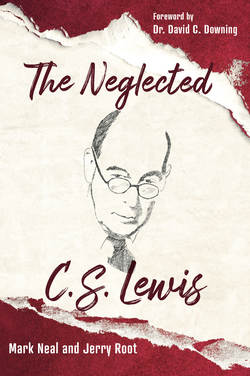Читать книгу The Neglected C. S. Lewis - Mark Neal - Страница 15
На сайте Литреса книга снята с продажи.
Spenser’s Goal for The Fairie Queene
ОглавлениеThe Fairie Queene was written to give pleasure to Spenser’s readers. Nevertheless, Lewis summarizes the author’s purpose: “The goal of love which Spenser here celebrates is lawful, carnal fruition within marriage.”37 To accomplish this, Spenser utilized the influence of the Italian epic. In fact, Lewis says, “‘Influence’ is too weak a word for the relation which exists between the Italian epic and The Faerie Queene.”38 The style was best used by Ariosto and even more by Boiardo’s Orlando Furioso (“The Madness of Roland”) and the Innamorato. Supreme characteristics of this genre are “The speed, the pell-mell of episodes, the crazy carnival jollity of Boiardo [which] are his very essence.”39
Lewis says the formula is to take any number of chivalrous romances and arrange such a series of coincidences that they interrupt one another every few pages. There is no rest. The action gives way to new and constant twists and adventure. For a popular, modern comparison, the action of an Indiana Jones movie would best capture something of the flavor. In addition, Spenser co-opts the Italian epic—a literary form already so beloved and popular in his day—for an English audience, and his readers were quick to embrace and love him. Consequently, what Spenser had to say about marriage was popularized and spread like wildfire.
Lewis observed that The Faerie Queene “is full of marriages.”40 These marriages are laudable, celebrated, and passionate. The image inculcated into the popular culture affected change for the good. This is the very point Lewis is making in The Allegory of Love. Lewis, as an academic, was gaining an ear and an eye for something of the biblical ideal. He did not compromise his craft to preach a sermon, but his careful research and convincing writing gained credit for the biblical ideal in a unique way. He realized that his scholarship could be a vehicle to help others take notice of the pleasures God intended for marriage.
Lewis took delight in this material, and elsewhere says:
Spenser was certainly, in his own way, a religious man. And also a religious poet. But the deepest, most spontaneous, most ubiquitous devotion of that poet goes out to God, not as the One of Plotinus, not as the Calvinists’ predestinator, not even as the Incarnate Redeemer, but as “the glad Creator,” the fashioner of flower and forest and river, of excellent trout and pike, of months and seasons, of beautiful women and “lovely knights,” of love and marriage, of sun, moon, and planets, of angels, above all of light. He sees the creatures, in Charles Williams’ phrase, as “illustrious with being.”41
Lewis uses Spenser’s vision of life to awaken in his readers a similar longing and desire. From here, one sees some of the Spenserian ideals manifesting themselves in a variety of ways in Lewis’s other works. A few poignant examples might make the case: the awakening of love and the hope for passion between the once psychologically estranged Mark and Jane Studdock in That Hideous Strength, Lewis’s speculation about unfallen sexuality in A Preface to Paradise Lost, ideas about Christian marriage expressed in Mere Christianity, as well as others developed in the text on Eros in The Four Loves.
